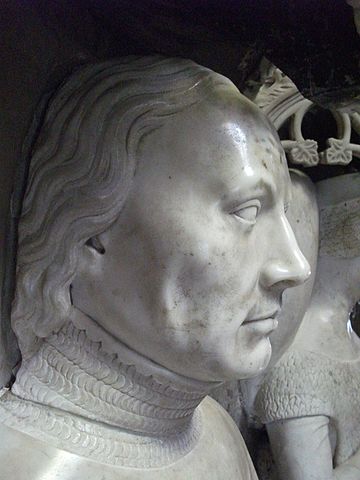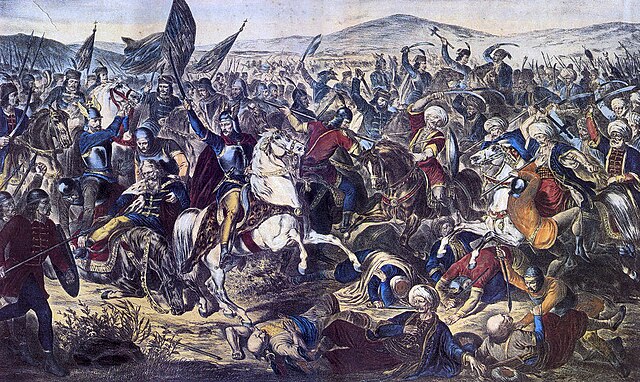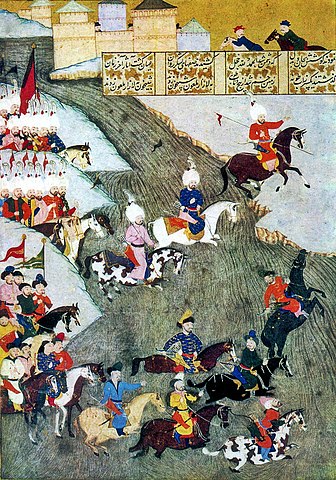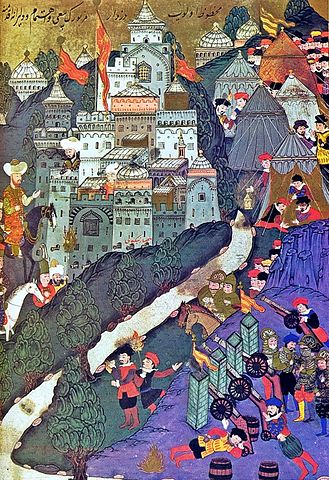I am sorry to say that this is another instance in which the vast majority of the update is OTL. I played a bit with the depiction of events because I was able to find quite vivid depictions of several of the events. I really hope you enjoy.
<SNIP>
On the Tuesday before Candlemas Day, January 28, 1393, four days after Coucy had left Paris, the Queen gave a masquerade to celebrate the wedding of a favorite lady-in-waiting who, twice widowed, was now being married for the third time. A woman’s re-marriage, according to certain traditions, was considered an occasion for mockery and often celebrated by a charivari for the newlyweds with all sorts of license, disguises, disorders, and loud blaring of discordant music and clanging of cymbals outside the bridal chamber. Although this was a usage “contrary to all decency,” King Charles had let himself be persuaded by dissolute friends to join in such a charade. Six young men, including the King, disguised themselves as “wood savages,” in costumes of linen cloth sewn onto their bodies and soaked in resinous wax or pitch to hold a covering of frazzled hemp, “so that they appeared shaggy and hairy from head to foot.” Face masks entirely concealed their identity. Aware of the risk they ran in torch-filled halls, they forbade anyone carrying a torch to enter during the dance. Plainly, an element of Russian roulette was involved, the tempting of death that has repeatedly been the excitement of highborn and decadent youth. Certain ways of behavior vary little across the centuries. Plainly, too, there was an element of cruelty in involving as one of the actors a man thinly separated from madness. The deviser of the affair, “cruelest and most insolent of men,” was one Huguet de Guisay, favored in the royal circle for his outrageous schemes. He was a man of “wicked life” who “corrupted and schooled youth in debaucheries,” and held commoners and the poor in hatred and contempt. He called them dogs, and with blows of sword and whip took pleasure in forcing them to imitate barking. If a servant displeased him, he would force the man to lie on the ground and, standing on his back, would kick him with spurs, crying, “Bark, dog!” in response to his cries of pain. In their Dance of the Savages, the masqueraders capered before the revelers, imitating the howls of wolves and making obscene gestures while the guests tried to discover their identity. Charles was teasing and gesticulating before the fifteen-year-old Duchesse de Berry when Louis d’Orléans and Philippe de Bar, arriving from a party elsewhere, entered the hall accompanied by torches despite the ban. To discover who the dancers were, Louis held up a torch over the capering monsters. A spark fell, a flame flickered up a leg, first one dancer was afire, then another. The Queen, who alone knew that Charles was among the group, shrieked and fainted. The Duchesse de Berry, who had recognized the King, threw her skirt over him to protect him from the sparks, thus saving his life. The room filled with the guests’ sobs and cries of horror and the tortured screams of the burning men. Guests who tried to stifle the flames and tear the costumes from the writhing victims were badly burned. Except for the King, only the Sire de Nantouillet, who flung himself into a large wine-cooler filled with water, escaped. The Count de Joigny and Jean de Berry, second son of the Duc de Berry, were burned to death on the spot, Aimery Poitiers died after two days of painful suffering. Huguet de Guisay lived for three days in agony, cursing and insulting his fellow dancers, the dead and the living, until his last hour. When his coffin was carried through the streets, the common people greeted it with cries of “Bark, dog!” The incident, called the Bal des Ardents, added to the impression of a court steeped in extravagance, with a king in delicate health and unable to rule. Charles's attacks of illness increased in frequency such that by the end of the 1390s his role was merely ceremonial (13).
<SNIP>
(13) The Bal des Ardents is an insane event which I just had to include. I was considering having Charles' first instance of madness occur in the aftermath, but thought the Craon and Clisson struggle to be too fascinating to leave out of the TL. The only difference from OTL is that Yvain de Foix, bastard son of Gaston III Phoebus isn't present to die at the burning, having died before his father in an earlier update. He is replaced by Jean de Berry, second son of the Duc de Berry who instead burns to death for joining in the madness.











